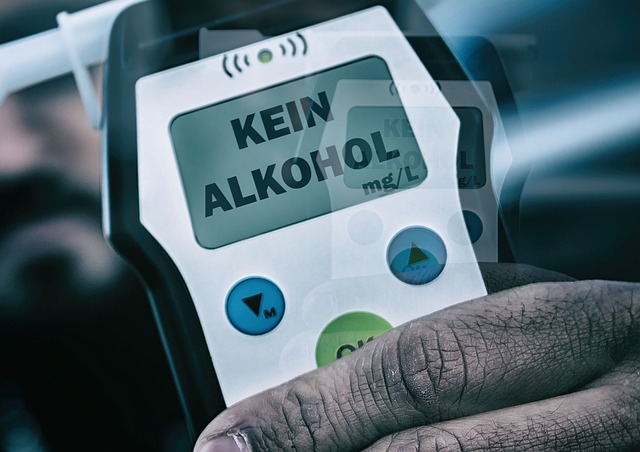Drug-impaired driving, particularly among high-risk reoffenders, poses a significant road safety concern. The Zero Tolerance policy addresses this by imposing strict penalties and tailored management strategies for repeat offenders. Effective management involves mandatory treatment, intensive supervision, and community support to break the cycle of reoffending. Stricter laws, early intervention, and access to counseling reduce recidivism. Targeting high-risk individuals with comprehensive strategies significantly diminishes accidents, injuries, and fatalities caused by impaired driving.
Drug-Impaired Driving (DID) poses a significant threat to public safety, with zero-tolerance laws in place to combat this growing concern. This article explores the comprehensive approach needed to address DID, focusing on high-risk reoffenders and their unique challenges. We delve into the profound impact of DUI on victims and communities, highlighting the importance of effective management strategies for impaired drivers. Additionally, we examine legal consequences, preventive measures, and support systems crucial in rehabilitating offenders and safeguarding our roads.
- Understanding Drug-Impaired Driving: The Zero Tolerance Approach
- High-Risk Reoffenders: Identifying and Addressing the Challenge
- Impact of DUI on Victims and Communities
- Effective Management Strategies for Drug-Impaired Drivers
- Legal Framework and Consequences for Repeated Offenses
- Preventive Measures and Support Systems for Rehabilitation
Understanding Drug-Impaired Driving: The Zero Tolerance Approach

Drug-impaired driving is a serious road safety concern, especially when it comes to high-risk offenders. The Zero Tolerance approach aims to tackle this issue head-on by implementing strict penalties for anyone caught driving under the influence of drugs or alcohol. This policy sends a clear message that such behavior is not tolerable and will result in severe consequences.
The primary goal is to deter potential drivers from engaging in impaired driving and ensure public safety. By treating drug-impaired driving as a high-risk reoffender DUI management issue, authorities can focus on prevention, swift enforcement, and effective rehabilitation programs. This proactive strategy aims to reduce the number of accidents, injuries, and fatalities caused by individuals who pose an increased risk to themselves and others when behind the wheel under the influence.
High-Risk Reoffenders: Identifying and Addressing the Challenge

In the context of drug-impaired driving, identifying and managing high-risk reoffenders is a critical component of zero-tolerance policies. These individuals pose significant challenges due to their recurring involvement in Driving Under the Influence (DUI) offenses, often indicative of a deeper-rooted problem or lack of response to existing penalties. High-risk reoffenders require tailored strategies that go beyond conventional punishment to address the underlying causes, such as substance abuse disorders, mental health issues, or social and economic factors contributing to their repeated DUI incidents.
Effective management involves comprehensive approaches, including mandatory treatment programs, intensive supervision, and enhanced community support. Law enforcement agencies, in collaboration with rehabilitation centers and social services, can implement these measures to disrupt the cycle of reoffending. By prioritizing the unique needs of high-risk individuals, authorities can work towards reducing recidivism rates and ensuring safer roads for all.
Impact of DUI on Victims and Communities

Drug-Impaired Driving (DUI) has far-reaching consequences, profoundly impacting victims and communities alike. When an individual operates a vehicle under the influence of drugs or alcohol, they not only endanger their own life but also pose significant risks to others on the road. Victims of DUI incidents often suffer severe injuries or even lose their lives due to the reckless actions of impaired drivers. The emotional trauma experienced by families and friends left behind is immeasurable.
Moreover, communities bear the brunt of this issue through increased healthcare costs, legal expenses, and reduced overall quality of life. Reoffending rates among high-risk individuals with a history of DUI further complicate matters, leading to a cycle of harm and perpetuating the challenges faced by law enforcement and rehabilitation programs. Effective management of DUI cases is crucial in breaking this cycle, focusing on stringent penalties and comprehensive support for both victims and those struggling with substance abuse issues.
Effective Management Strategies for Drug-Impaired Drivers

Managing drug-impaired drivers effectively is a multifaceted challenge, especially given the heightened risk posed by these individuals. For those who have been convicted of Driving Under the Influence (DUI) multiple times or are classified as high-risk reoffenders, stringent measures must be implemented to prevent recidivism. One proven strategy involves rigorous monitoring using technology like interlock devices, which prevent a vehicle from starting if alcohol is detected. These devices not only deter further substance abuse while driving but also provide real-time data for rehabilitation programs.
Additionally, structured support systems including regular meetings with sobriety coaches and participation in therapy sessions can significantly reduce reoffending rates. Educational programs that highlight the consequences of drug-impaired driving and promote healthy coping mechanisms are also valuable tools. Lastly, building a strong support network among family, friends, and community resources can provide much-needed encouragement for long-term recovery and successful reintegration into society.
Legal Framework and Consequences for Repeated Offenses

In many jurisdictions, drug-impaired driving is treated with severe consequences, reflecting a zero-tolerance policy towards this high-risk behavior. The legal framework surrounding this issue is designed to deter individuals from operating vehicles while under the influence of illicit substances or prescription medications that impair judgment and motor skills. Penalties for a first offense typically include fines, license suspension, and mandatory drug testing.
For repeated offenses, especially those involving multiple convictions within a short period, individuals face significantly stricter penalties. They may be classified as high-risk reoffenders, subject to enhanced DUI management strategies. This can involve longer license suspensions, higher fines, jail time, and participation in intensive rehabilitation programs. Such stringent measures aim to not only punish but also treat the underlying issues contributing to repeated drug-impaired driving incidents.
Preventive Measures and Support Systems for Rehabilitation

Preventive measures play a pivotal role in addressing drug-impaired driving. Stricter laws and penalties, such as zero tolerance policies, act as powerful deterrents, but they are only part of the solution. Early intervention and support systems are crucial for high-risk reoffenders. Programs that offer counseling, education, and access to rehabilitation services can significantly reduce recidivism rates. These measures aim to address the root causes of substance abuse, providing individuals with the tools necessary to break free from the cycle of addiction.
Supportive communities and peer groups can also be game-changers in DUI management. Encouraging participation in support networks allows for shared experiences and emotional backing, fostering a sense of accountability. Additionally, access to specialized treatment facilities equipped to handle high-risk cases ensures comprehensive care. These preventive strategies not only curb the instances of drug-impaired driving but also offer long-term solutions for rehabilitation and positive behavioral changes.
Drug-impaired driving is a severe issue that poses significant risks not only to drivers but also to victims and communities. The zero tolerance approach, coupled with effective management strategies and robust legal frameworks, is crucial in addressing this challenge. By identifying and targeting high-risk reoffenders and implementing preventive measures, we can foster rehabilitation and reduce recidivism. Through these collective efforts, we can create a safer driving environment for all.






